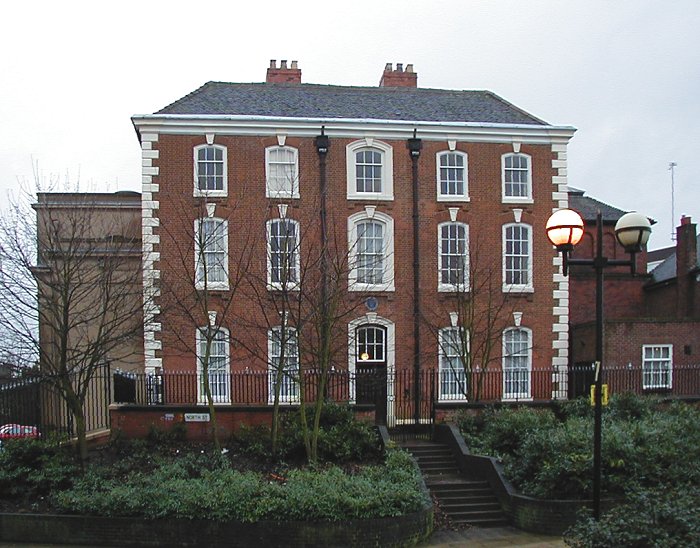Turbulent
Beginnings
There is a long tradition of non-conformism in the UK
and its followers went through turbulent and difficult
times. Religious persecution continued for many years
and things came to a head in the mid17th century, after
which Nonconformist congregations were finally allowed
to worship legally. The Nonconformist name can be
applied to any church that is not a member of the Church
of England, but in practice usually refers to
Protestants including Baptists, Congregationalists,
Primitive Methodists, Wesleyan Methodists, Quakers,
Unitarians, and the Salvation Army.At the time of the
Reformation both Charles II and the Church of England
were anxious to establish their authority and five Acts
were Passed in Parliament to control the growth of
non-conformism.
1. The Corporation
Act of 1661 prohibited any Nonconformist from holding
office in any municipal corporation.
2. The Act of
Uniformity of 1662 required all ministers to be
re-ordained if not already ordained by a bishop, and
declare their loyalty to the Book of Common Prayer. This
resulted in 2,000, or about one fifth of the ministers
being expelled from the church. Many however continued
to hold services outside the church.
3. The Conventicle
Act of 1664 which forbade any religious meeting to take
place that was not in accordance with the practices of
the Church of England, at which more than 4 persons were
present in addition to the household. Families were
still allowed to worship privately within their own
home. The penalty for not following the Act ranged from
a 5 shilling fine, a great deal of money at the time, to
transportation to the colonies. Transportation was a
terrible sentence which forced the prisoner to work as a
slave, often on sugar plantations in such places as the
Barbados or the West Indies. Samuel Pepys mentions some
of them in his diaries: "I met some of these worshippers
on their way to the inevitable sentence; they go like
lambs, without any resistance. I wish to God they would
reform, or be more wise and not be caught".
4. The Five Mile Act
was Passed in 1665 which forbade all preachers and
religious teachers who refused the oaths to come within
five miles of any town or place where they had
previously practiced. This resulted in ministers
preaching secretly in the remoter parts of the country
and travelling great distances to do so. They often
worshipped in tiny holes or corners chanting the Psalms
and observing the ordinance of the Lord's Supper
together. The minister would sometimes be in disguise
but the singing attracted informers and had to be given
up. As a result many Nonconformists were imprisoned.
5. The Test Act of
1673 prohibited Nonconformists from holding any civil or
military post unless they had taken communion in a
parish church.
The strict laws remained in place until 1689 when the
Toleration Act was passed, mainly thanks to the new
monarchy. |

Wolverhampton's main Catholic
Church is St. Peter & St. Paul at Giffard House. Inside
the house was a secret chapel that was necessary because
the Toleration Act didn't include Catholicism. Bishop Milner, the occupant for
many years, was at the forefront of the fight for
Catholic emancipation. |
Charles II died in 1685 and his brother James became
king. James II attempted to promote Roman Catholicism
and appointed loyal Roman Catholic officers in the armed
forces and in senior political positions, after
dismissing anyone who refused to support the withdrawal
of laws penalising religious dissidents. He also
attempted to rule without Parliament after dissolving
it, and when he became a father it seemed as though a
Roman Catholic dynasty would be established. This led to
much dissent and eventually to James' downfall.
Due to the unrest and lack of support for James, William
of Orange, James's son-in-law, landed at Torbay with an
army in November, 1688 to lay claim to the throne. The
Protestant Members of Parliament and the armed forces
rallied around him, and James panicked and fled the
country.
William and Mary came to the throne in 1689 and finally
the end was in sight for religious persecution in
England. In that year the Bill of Rights Act was passed
which prevented the monarch claiming that his or her
power came from God, so removing the concept of divine
right. It also made kings and queens subject to Acts of
Parliament. The Toleration Act was also Passed to
promote religious toleration. It gave all nonconformists
except Roman Catholics the freedom of worship and
rewarded the Protestant dissenters for their refusal to
side with James II. Under the terms of the Act,
Nonconformist congregations were able to worship freely
in their own meeting houses, provided they were
registered with either civil or diocesan authorities and
within 30 years over 4,000 were in use. |
 |
|
 |
Return to the
beginning |
|
Proceed to St. John's Lane Meeting House |
|